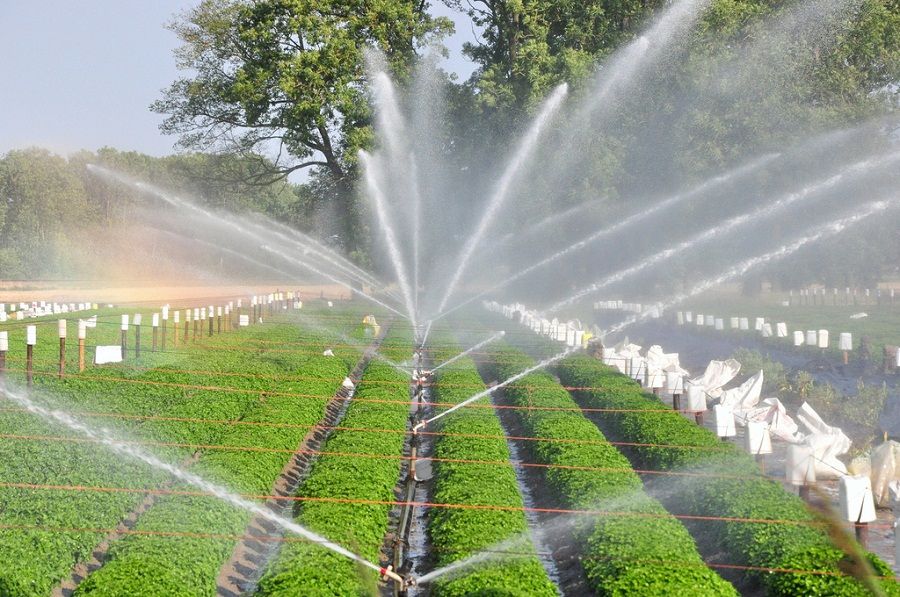Class 8 Crop Production and Management Notes
Crop Production and Management Notes
Crop:-
When plants of the same kind are grown and cultivated at one place on a large scale, it is called a crop.
Types of crops:-
- Kharif Crops:- The crops which are sown in the rainy season are called kharif crops.
Their time period is generally from June to September.
Ex:- Paddy, maize, soyabean, groundnut, cotton etc. - Rabi crops:- The crops grown in the winter season are called rabi crops.
Their time period is generally from October to March.
Ex :- Wheat, gram, pea, mustard, linseed etc.
Agricultural practices:-
Cultivation of crops involves several activities undertaken by farmers over a period of time. These activities are referred as agricultural practices.
Activities involved in agricultural practices are:-
- Preparation of soil
- Sowing
- Adding manure and fertilisers
- Irrigation
- Protecting from weeds
- Harvesting
- Storage
Preparation of soil:-
- Preparation of soil involves loosening and turning of soil.
- Loosening of soil helps the roots of the plants to penetrate deep into the soil.
- It allows the roots to breathe easily.
- The loosened soil helps in the growth of earthworms and friendly microbes present in the soil.
- These organisms also help to loosen the soil and add humus to it.
Tilling / Ploughing:- The process of loosening and turning
of the soil is called tilling or ploughing.
The main tools used for this are plough, hoe and cultivator.
Sowing:-
- The process of planting the seeds in the soil is called sowing.
- Good quality of seeds (clean and healthy seeds) are selected before sowing.
- The main tools used for sowing seeds are traditional tool and seed drill.
Adding manure and fertilisers:-
The substances which are added to the soil in the form of nutrients for the healthy growth of plants are called manure and fertilisers.
Advantages of manure:-
The organic manure is considered better than fertilisers because it
- enhances the water holding capacity of the soil.
- makes the soil porous due to which exchange of gases becomes easy.
- increases the number of friendly microbes.
- improves the texture of the soil.
Differences between Fertiliser and Manure:-
| Fertiliser | Manure |
| A fertiliser is an inorganic salt. Ex:- urea, ammonium sulphate, super phosphate, potash, NPK (Nitrogen, Phosphorus, Potassium) | Manure is a natural substance obtained by the decomposition of cattle dung, human waste and plant residues. |
| A fertiliser is prepared in factories. | Manure can be prepared in the fields. |
| A fertiliser does not provide any humus to the soil. | Manure provides a lot of humus to the soil. |
| Fertilisers are very rich in plant nutrients like nitrogen, phosphorus and potassium. | Manure is relatively less rich in plant nutrients. |
The fertility and the nutrients of the soil can be maintained by :-
- adding manure
- field fallow (leaving the field uncultivated in between two crops)
- crop rotation (growing different crops alternatively)
Irrigation:-
The supply of water to crops at different intervals is called irrigation.
Sources of irrigation:-
The sources of irrigation are— wells, tubewells, ponds, lakes, rivers, dams and canals.
Traditional Methods of Irrigation:-
The various traditional ways of irrigation are-
- moat (pulley-system)
- chain pump
- dhekli, and
- rahat (Lever system)
Modern Methods of Irrigation:-
Modern methods of irrigation help us to use water economically. The main methods used are –
- Sprinkler System:- In this system, water passes through a network of pipes which then escapes from rotating nozzles and gets sprinkled on the crop as if it is raining.
- This system is more useful on the uneven land where sufficient water is not available and for sandy soil.

- This system is more useful on the uneven land where sufficient water is not available and for sandy soil.
- Drip system:- In this system, the water falls drop by drop just at the position of the roots. So it is called drip system.

Protection from weeds:-
Weeds:- The undesirable plants that grow naturally along with
the crop are called weeds.
Weeding:- The removal of weeds is called weeding.
- Weeds can be removed or controlled by tiling before sowing, manual removal using khurpi or by using certain chemicals, weedicides.
Harvesting:-
The cutting of crop after it is mature is called harvesting.
- Harvesting is done manually by using sickles or by a machine called harvester.
Threshing:- The process of separation of grain seeds from chaff is called threshing.
Winnowing:- The process of separation of grain and chaff with the help of air current is called winnowing.
Storage:-
- Before storing, the grains are properly dried in the sun to reduce the moisture in them. This prevents the attack by insect pests, bacteria and fungi.
- Large scale storage of grains is done in silos and granaries to protect them from pests like rats and insects.
- Dried neem leaves are used for storing food grains at home.
Animal husbandry-
Animal husbandry is the branch of agriculture that deals with rearing of animals for food, fibre and other products.


Comments